Report exposes hidden crisis in Southern Africa's public health sector, Mozambique included - ...
Except for Nampula, Niassa, Cabo Delgado: 2014/15 statistics indicated decline in poverty – Mozambique

File photo / Introducing the survey, the Permanent Secretary of the Ministry of Economy and Finance, Domingos Lambo, warned that it does not take into account recent developments, such as the sharp devaluation of the Mozambican currency, the metical, and the consequent rise in prices.
The proportion of the Mozambican population living below the poverty line has fallen to 46.1 per cent, according to figures from the 2014/15 Household Budget Survey, released by the Ministry of Economy and Finance at a Maputo conference on poverty on Wednesday.
The poverty line reflects the cost of acquiring a basket of foodstuffs providing a diet of 2,150 calories per person per day, plus the cost of acquiring some basic non-food goods (such as school expenses, medicines, clothing and footwear).
According to a Ministry document “if the poverty line is on average 30 meticais a day (about 40 US cents, at current exchange rates), any individual whose consumption falls below this value is regarded as poor, irrespective of how he spends the money”.
The methodology for calculating the poverty line has changed, to ensure that the baskets of goods and services have the same quality throughout the country. Up to the third poverty assessment, in 2008/09, Maputo city and province had higher quality baskets than the rest of the country. That has now been eliminated.
Using the old methodology, the proportion living below the poverty line fell from 69.4 per cent in the first assessment, in 1996/97 to 54.1 per cent in the second assessment (2002/03). The poverty rate then essentially stagnated. The third assessment (2008/09) found that 54.7 per cent of the population were living below the poverty line. Using the same methodology the poverty rate in the 2014/15 assessment was 49.2 per cent.
The Ministry has now recalculated all the rates using the new methodology of equivalent baskets. That gives a poverty rate of 69.7 per cent in 1996/97, 52.8 per cent in 2002/03, 51.7 per cent in 2008/09, and 46.1 per cent in 2014/15.
As expected, the poverty rate is much worse in the countryside than in the towns. The number of people living below the poverty line in rural areas fell from 53.8 to 50.1 per cent. The fall was much steeper in the towns – from 46.8 to 37.4 per cent.
Alarming figures in Nampula, Niassa and Cabo Delgado
The truly alarming figures are seen when the survey is broken down by provinces. In the three northern provinces of Nampula, Niassa and Cabo Delgado the poverty rate increased, even though these are some of the most fertile areas in Mozambique. The poverty rate in Nampula rose from 51.4 to 57.1 per cent, in Cabo Delgado from 39 to 44.8 per cent, and in Niassa from 33 to a shocking 60.6 per cent. In the space of six years, poverty in Niassa almost doubled.
Everywhere else poverty rates fell, but only in Maputo City and Province is less than 20 per cent of the population living below the poverty line (18.9 per cent in the province, and 11.6 per cent in the city).
Seeking reasons for increased poverty in the northern provinces, the Ministry pointed to the floods of early 2015, and the severe damage to the road system and to power supplies. Most of Nampula, Niassa and Cabo Delgado were without power from the electricity grid for up to three months.
The problem with these explanations is that they all apply to Zambezia province as well – indeed Zambezia was the scene of the worst flooding in January 2015. Yet the poverty rate in Zambezia declined significantly, from 67.2 to 56.5 per cent.
In absolute terms, thanks to the general growth in the Mozambican population, the number of poor people has actually increased, from 11.1 million in 2008/9 to 11.8 million in 2014/15. In the countryside the rise was from 8.1 to 8.8 million, while in the cities the number of poor people fell slightly from 3.1 to three million.
The household survey also showed increasing inequality, as measured by the Gini coefficient. The Gini coefficient is zero if everybody in a given society enjoys the same level of consumption. If one person has everything, and everybody else nothing, then the coefficient is one. So the higher the Gini coefficient is, the more unequal the society.
In Mozambique the Gini coefficient jumped from 0.42 in 2008/09 to 0.47 in 2014/15. This growing inequality was entirely an urban phenomenon. In the countryside the Gini coefficient remained unchanged at 0.37, but in the towns it rose from 0.48 to 0.55.
The assessment also looked at “multi-dimensional poverty”. A household is considered poor if it is deprived in at least four of six key indicators. These are: whether anyone in the household has completed first level primary education (fifth grade); access to safe drinking water; safe sanitation; access to electricity; a conventional roof to the house; and ownership of durable goods.
Under this definition, there are many more poor people in the country, but there has also been a sharper reduction in this type of poverty. The percentage of households suffering at least four out of the six deprivations fell from 69 per cent in 2008/09 to 55 per cent in 2014/15. In the countryside the fall was from 86 to 72 per cent, and in the towns it was from 31 to 18 per cent.
Unlike the definition of poverty based solely on consumption and calories, in multi-dimensional poverty the entire country showed an improvement.
The percentage of the population suffering none of the six privations rose from 8.5 to 15.9 per cent, while the proportion suffering from all six fell from 23.7 to 14.4 per cent.
Introducing the survey, the Permanent Secretary of the Ministry of Economy and Finance, Domingos Lambo, warned that it does not take into account recent developments, such as the sharp devaluation of the Mozambican currency, the metical, and the consequent rise in prices.
The Ministry is now considering holding a further household budget survey, with a smaller sample, after the 2017 population census.


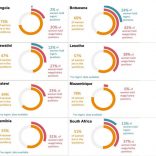

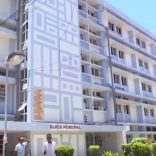
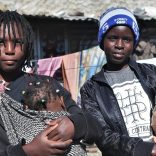


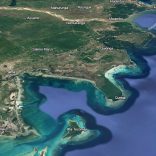

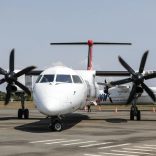
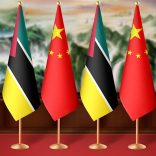
Leave a Reply
Be the First to Comment!
You must be logged in to post a comment.
You must be logged in to post a comment.